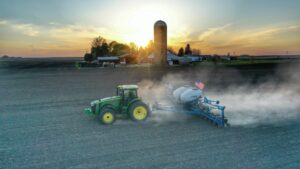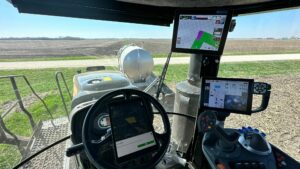When it comes to making data actionable for the future, it’s important to think of your data as something you’re nurturing.
Just like a crop in the field, data needs somebody to take care of it as well, says Steve Cubbage, vice president of data services for AGI’s Farmobile. That starts by thinking of it like it has value as it were a crop in your field.
“You spend a lot of time, effort and money trying to grow physical crop,” he says. “But, if you don’t put the same amount of effort in the data side, you’re going to grow a mediocre crop.”
One key is to ensure the company you’re working with to decipher information from data understands what they’re doing.
“They need to be able to understand and take in different, diverse data sources,” says Sebastian Schultheiss, managing director of Computomics. “Very heterogeneous data. And make sure that it works together and connects well. From there, it’s discovering what the customer’s data can do for them.”
Having an open, honest communication with your customer about their goals also helps companies better understand and better develop a relationship.
“Being willing to have that honest, open discussion with your customer to understand what they’re trying to learn and being able to assess what they can learn with their equipment is important,” says Robbie Weathers, product manager of Data Inwith Granular, Corteva’s flagship brand of farm management software. “If you don’t have equipment that’s able to do it, then you might as well not even try. Understanding and having that frank conversation opens doors.”
In addition, ensuring your plan is solid will only help you find more success.
Weathers says that while it might be tiring to hear, it’s crucial to understanding what data you’re working with — and what types of data. After that, it comes to making sure your data is accurate and understanding how to back check it.
“All these machines rely on measurements,” he says. “Get out the tape measure and put them in correctly, because that’s logging where things go in the ground. That ensures you’re setting yourself up for success and getting the best out of it.”
Finally, having a continuity of data is important — it’s just like understanding your field history.
“Unfortunately, in agriculture, we can’t just flip a switch and have a do over to collect data. You don’t get a mulligan,” Cubbage says. “Everything is calendar driven — you don’t get another chance for another year. Having that continuity of data over multiple years is very important.”
The best way to think of your data and its continuity isn’t like a slot machine in Vegas — instead, think of it more like a 401k.
While it’s hard to say what’s the best amount of time to have under your belt for your data to be most useful, fortunately, all three experts agree: it’s never too late to start.
“You have to make an investment in it and decide that it’s important from a cost standpoint,” Cubbage says. “If you don’t have data, you’re not going to find out or have a good answer to what’s going on at your farm. Plus, you’re not going to be prepared for the market that is growing for that data beyond the farm gate.”
Have you caught up on everything data? Make sure to read more at:
When it Comes to Data, Planning is Key
What Types of Data are on Your Operation?
How Can Big Data Teach Plants To Talk?, A Seed World Strategy Webinar
Turn Data into Action for Better Breeding













